By Alex Trukan
The ability of the strikers to effectively use space in behind of the opposition defense can lead to creating a handful of goal scoring opportunities. That key skill can be especially appreciated when the opposition applies high pressing or when it’s disorganised. However, not only counter-attack is a key moment for the striker’s to exploit gaps between opposition defenders and a goalkeeper. Even if the opposition is organised and defending deep, combination play and patient positional attack can lead to new pockets of space emerging in behind of the back line. A fine skill of making forward runs requires timing, pace, intelligence as well as good communication with the player on the ball.
Two key requirements for the striker to start preparing a forward run are spaces in behind of the opposition defense as well as space for the player on the ball to make a pass. If the space is available, the trigger for the striker to start making a run is when a player on the ball is not pressurised and the ball is ready to be played (further away from the feet).
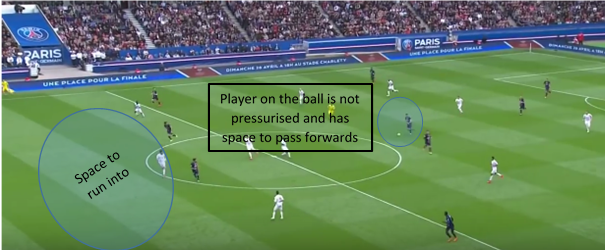
The starting position for the striker should be in the different line than the ball is as the run can’t be made in a straight line (ends where the ball arrives). As soon as the midfielder is ready to play (just before he receives), the striker starts to make a movement forwards (classical way). Timing is important to avoid the off-side.
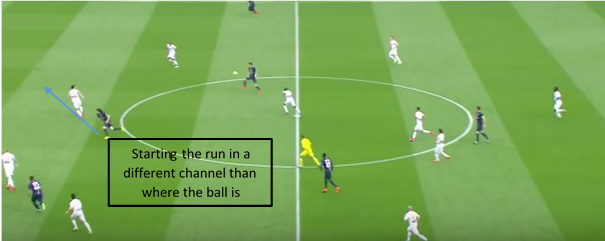
Runs in straight lines are easier to defend, therefore if possible any forward run should use a bit of disguise. One of the options is to make a crossover run with a second striker. That will force defenders to pass on a player to mark in the zone what can delay their reaction and recovery.
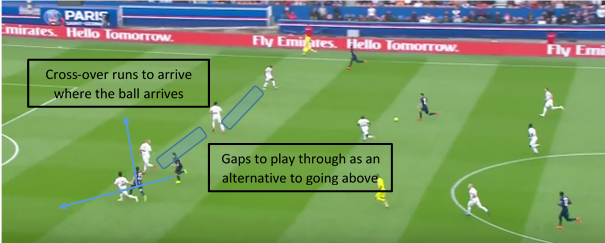
Curving the run across the opposition back unit will often ‘break’ their defensive line what will make it harder for them to use off side trap and therefore open up possibilities for other players to exploit that, receiving closer to the opposition goal.
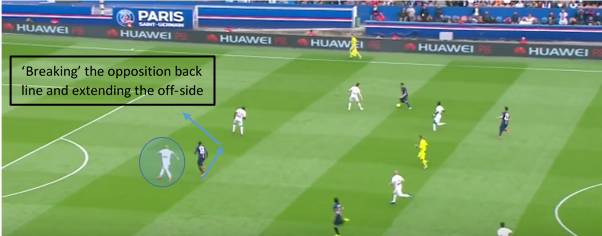
Runs on the weak side of the opposition can be used to switch play and exploit their blind side. Again, as it can be seen below, a disguise movement towards the ball is used to move the defender and then spin away into space in behind him. Body position of the defender makes it harder to turn and track the runner.
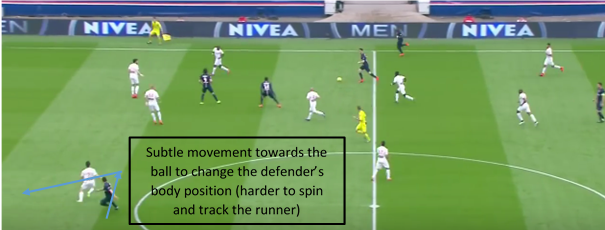
The aim of the run can also be focused on creating space for others rather than receiving the ball. These type of runs ae usually made from second line to create space for midfielders or by one of the strikers to create space for other striker. Timing of these runs and coordination with a pass into third player coming into newly created space is crucial.
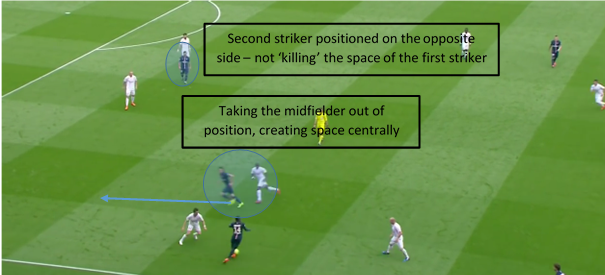
As the ball progresses into the final third and the opposition defends deeper in their own half, the space between their defensive unit and goalkeeper is restricted. That changes the types of runs as well as passes made by midfielders. Crucial trigger for the striker would be now space between centre backs. Cooperation between two strikers is now crucial to stretch opposition defenders and create gaps around them. Controlled possession of the ball by midfielders is essential to avoid pressure and be able to play forwards.
[wpsharely id="2988"][/wpsharely]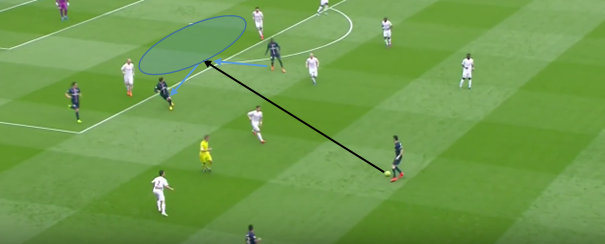
Quick combination might be used in order to progress in behind using short passes. Pace of the movement, support, communication as well as passing qualities are crucial. These kind of movements will usually emerge naturally if the players are given enough freedom and are encouraged to be creative.
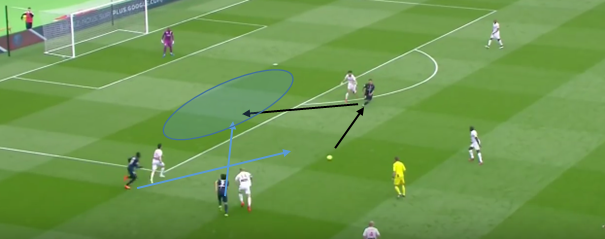
Progressing into spaces in behind the defense will often mean a good goal scoring opportunity, however in order to achieve that, either quick attack when opposition is disorganised or patience positional play waiting for the gaps is required.
By Alex Trukan, Development Coach, Nottingham Forest
@AlexTrukan


